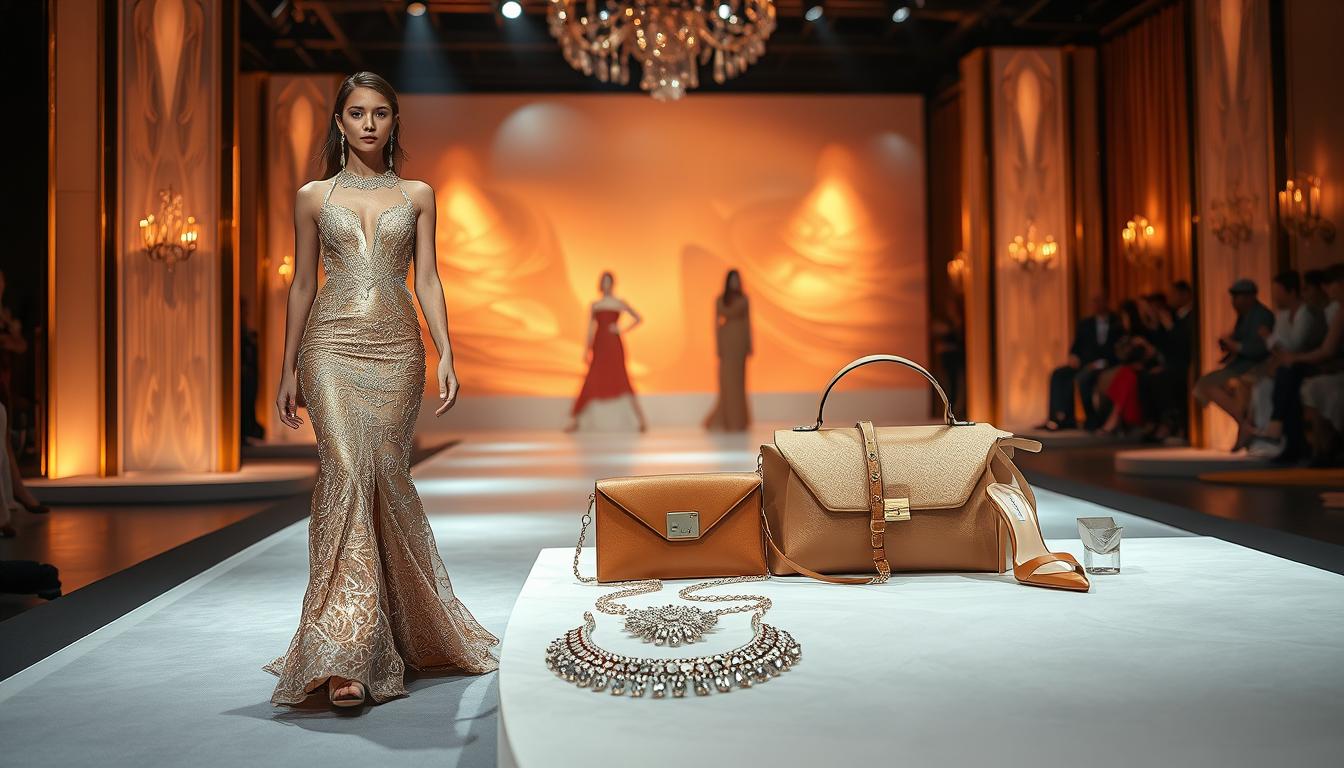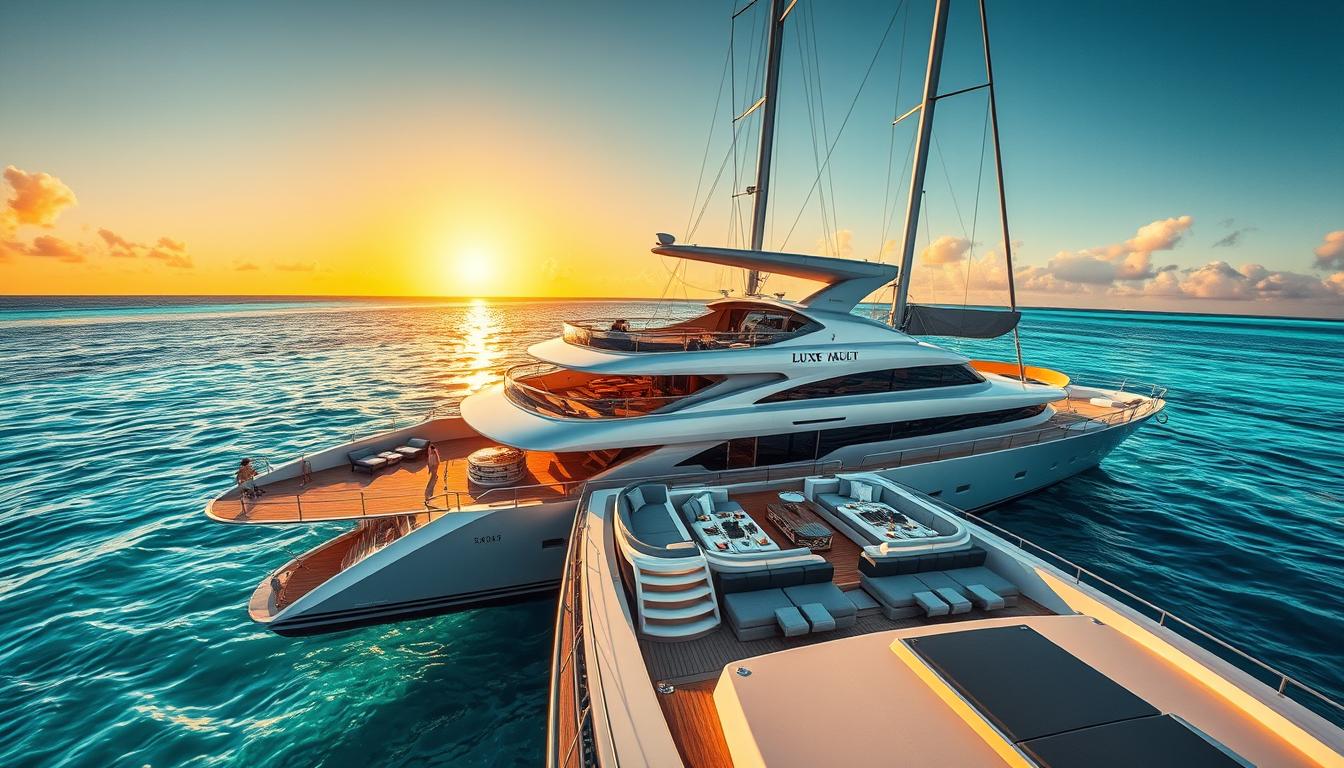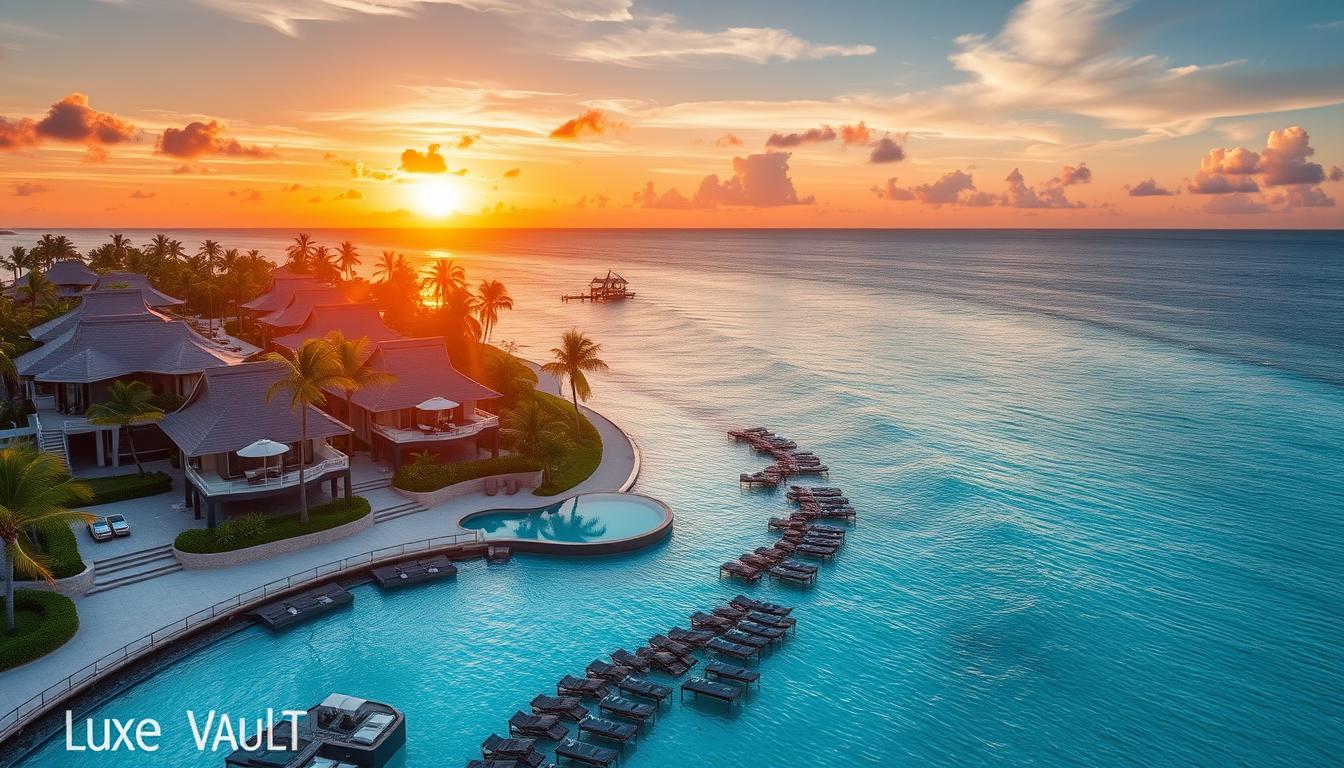The luxury market is experiencing a significant shift, driven by evolving consumer experiences and a blend of traditional craftsmanship with innovative approaches.
We’re excited to bring you the most comprehensive guide to the latest trends dominating the luxury fashion and accessories landscape in 2024-2025.
Our team has analyzed runway shows, designer collections, and market data to identify key shifts reshaping how consumers engage with luxury brands.
From timeless investment pieces to personalization in accessories, we’ll explore how the industry is adapting to changing preferences.
Key Takeaways
- The convergence of traditional craftsmanship with innovative approaches is creating new experiences for fashion enthusiasts.
- Luxury brands are focusing on personalization and unique style aesthetics.
- The evolution of timeless investment pieces is a significant trend in fashion.
- Consumer preferences are driving the shift towards more bespoke luxury products.
- Brands are leveraging technology to enhance consumer experiences.
The Evolution of Luxury Fashion in 2024-2025
The future of luxury fashion is being shaped by a complex interplay of factors, including technological innovation and changing consumer values. As we navigate through 2024-2025, it’s clear that the luxury fashion industry is undergoing a significant transformation.
Key Industry Shifts
The luxury goods market is experiencing a notable shift towards sustainability and ethical practices. According to recent trends, consumers are increasingly drawn to brands that align with their personal values, particularly regarding sustainability and cultural sensitivity. This shift is driving luxury brands to rethink their marketing strategies and product offerings.
- Luxury brands are adopting digital-first approaches to enhance the shopping experience.
- There’s a growing emphasis on quality over quantity, with consumers willing to pay premium prices for items with proven craftsmanship.
- The influence of sports and athletics on luxury fashion is becoming more pronounced, with athletes driving significant engagement during fashion events.
For more insights on the state of the fashion industry, you can refer to McKinsey’s State of Fashion report.
Consumer Behavior Changes
Consumer behavior is at the forefront of the evolution in luxury fashion. Modern luxury consumers are increasingly knowledgeable and discerning, researching extensively before making purchasing decisions. They seek authentic brand stories and value experiences over material goods.
The concept of luxury is evolving, with experiences and personal meaning taking precedence over conspicuous consumption. Consumers are looking for pieces that go beyond a season and resonate for years, reflecting a shift from impulse buys to intentional, collectible purchases.
To stay ahead, luxury brands must adapt to these changes by offering personalized experiences and aligning with consumer values. For expert strategies on digital marketing, you can explore resources like CoWrit Technologies’ digital marketing insights.
Top Trends in Luxury Fashion and Accessories
Elevated everyday luxury is defining the top trends in luxury fashion and accessories for 2024. As we explore these trends, it becomes clear that the lines between luxury and everyday style are increasingly blurring.
Influential Designer Brands
The Row has been a significant influencer in the luxury fashion landscape, with its Margaux bag becoming a staple in many client wardrobes. The brand’s ability to blend luxury with timelessness has resonated deeply with fashion insiders. The Olsen twins’ design philosophy has been particularly effective in creating pieces that are both stylish and enduring.
Must-Have Statement Pieces
We’ve identified several statement pieces that have dominated the luxury landscape. The Row’s Margaux bag is perhaps the most coveted accessory of the season, embodying the essence of ’90s minimalism with its sleek silhouette and muted color palette.
Other must-have items include Alaïa’s Le Teckel bag, known for its distinctive east-west shape, and standout footwear pieces like Prada’s satin mules and Loro Piana’s Rebecca flats. These luxury products are not only stylish but also represent a sound investment due to their timeless design.
The demand for these must-have items often exceeds supply, creating waiting lists and secondary market activity that further enhances their desirability. Accessories continue to dominate as the entry point for luxury shopping, offering consumers a more accessible way to participate in luxury brand experiences.
Investment Pieces: The Rise of Timeless Luxury
In the world of luxury fashion, a new trend is emerging: the pursuit of timeless, high-quality investment pieces. As luxury prices continue to rise, consumers are moving beyond trends, investing in pieces with real staying power. This shift is driven by a fundamental change in consumer mindset, where quality is increasingly taking precedence over quantity in luxury purchasing decisions.
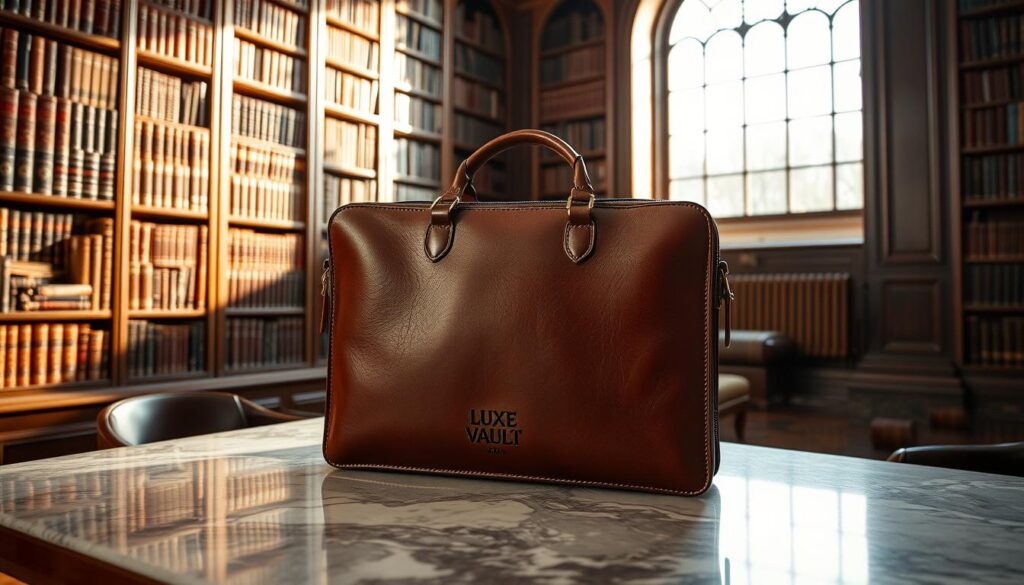
Modern Heritage Items
The concept of a capsule wardrobe built around fewer, better pieces continues to gain traction, particularly among sophisticated luxury consumers. We’re seeing a rise in demand for modern heritage items that are not only crafted with exceptional quality but also possess a timeless appeal. According to Wright, “Sourcing rare, iconic items reflects a shift from impulse buys to intentional, collectible purchases.”
Luxury brands are responding by emphasizing craftsmanship stories, material quality, and production transparency to validate their price points. This approach helps consumers understand the value behind their investment.
Quality Over Quantity
The shopping experience itself has evolved to support this quality-focused approach, with more detailed product information and personalized guidance becoming standard. Consumers are developing deeper product knowledge and asking more sophisticated questions about construction methods, material sourcing, and durability.
This quality-over-quantity approach extends beyond the physical product to encompass the entire brand experience, from digital engagement to after-sales service. As a result, luxury consumers are enjoying a more satisfying and meaningful shopping experience.
The Accessory Revolution
We’re witnessing a seismic shift in luxury fashion, with accessories taking center stage. The way consumers interact with luxury brands is changing, and accessories are at the forefront of this transformation.
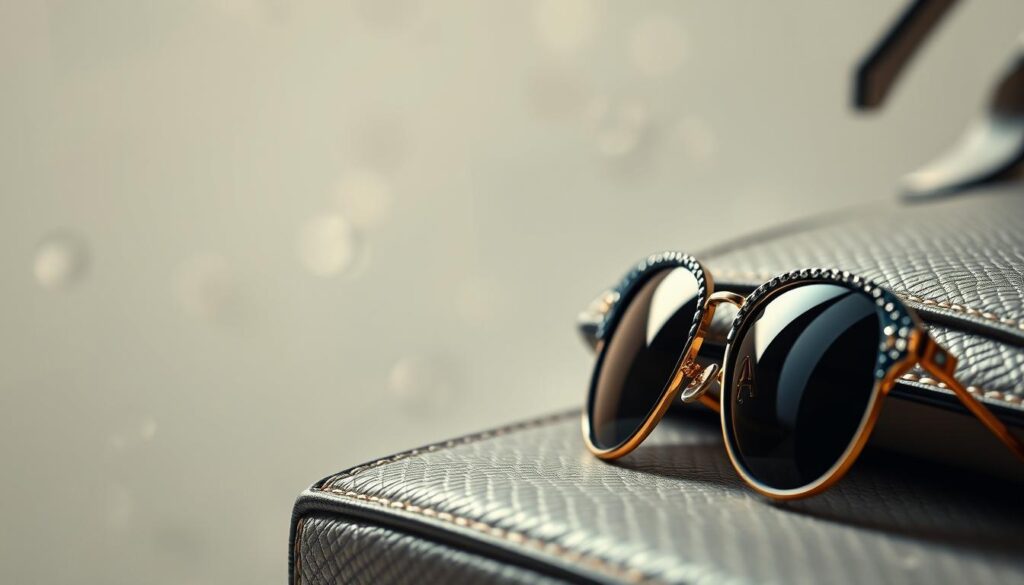
Little Luxuries Making Big Statements
Luxury brands are now focusing on creating “little luxuries” that make big statements. Miu Miu’s collection of miniature designer bag charms is a prime example, transforming iconic designs into collectible accessories. These luxe charms blend functionality with exclusivity, allowing fashion enthusiasts to customize their everyday items with playful elegance.
The trend underscores the growing demand for personalized luxury, where consumers seek unique expressions of their personal style. By offering such unique accessories, brands cater to the desire for exclusivity and self-expression.
Personalization and Customization
Personalization is emerging as a significant trend in luxury fashion, with brands offering sophisticated customization options. This trend reflects consumers’ desire for unique expressions of personal style in a market often dominated by recognizable status items. Luxury brands are creating innovative personalization opportunities through collectible charms and add-ons.
We’re seeing personalization evolve from simple monogramming to more complex customization options involving materials, colors, and structural elements. This satisfies the modern luxury consumer’s desire for both exclusivity and self-expression, creating emotional connections that transcend the physical product.
Style Aesthetics Dominating Luxury Fashion
In the realm of luxury fashion, we’re witnessing a fascinating interplay between elegance and bohemian flair. This contrast is shaping the industry in profound ways, influencing everything from ready-to-wear collections to accessories and beauty trends.
The Return of Elegance
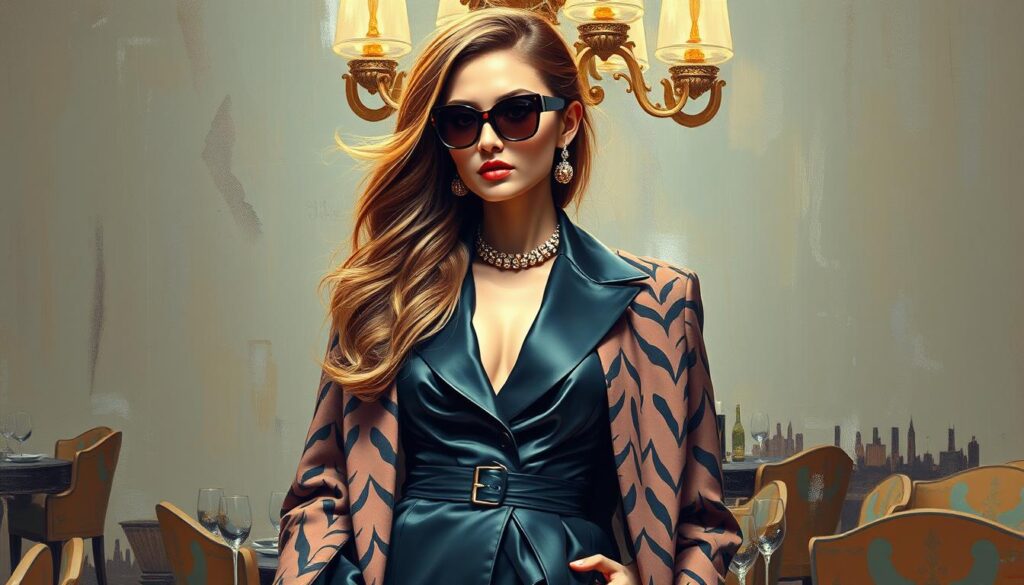
The luxury fashion world is experiencing a resurgence of elegance, characterized by refined silhouettes, luxurious fabrics, and meticulous attention to detail. This trend is evident in the recent collections of top designer brands, who are embracing a more sophisticated and polished aesthetic.
Elegant luxury fashion trends are not just about aesthetics; they also reflect a desire for timeless pieces that exude quality and craftsmanship. As a result, we’re seeing a renewed focus on traditional techniques like embroidery and beading, elevated through exceptional materials and execution.
Bohemian Daydream
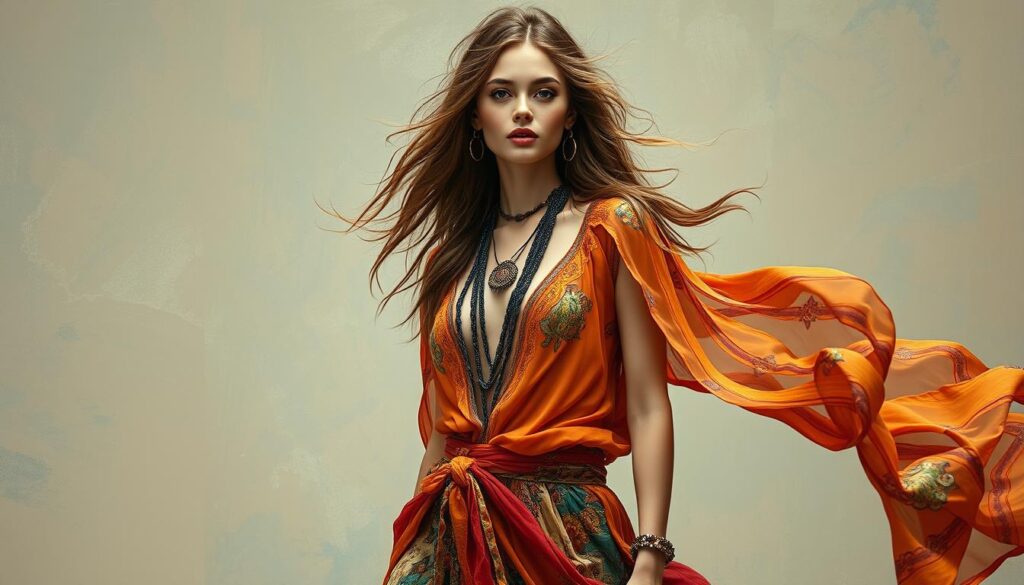
The bohemian style has been gaining momentum over the past year, with spring’s top runways taking the ’70s-inflected aesthetic to new heights. Designers like Chloé, Valentino, Fendi, and Armani have incorporated sheer fabrics, handicraft detailing, and substantial footwear into their collections, creating a dreamy yet grounded look.
The modern bohemian aesthetic balances ethereal elements with practicality, often featuring flowy silhouettes and handcrafted details. This style is not limited to clothing; it extends to beauty and styling choices, with loose, adorned hair and natural makeup completing the look.
We’re experiencing a sophisticated revival of bohemian style that’s influencing luxury fashion across multiple categories. This trend represents a reaction to the minimalist aesthetics that have dominated luxury fashion, bringing back texture, pattern, and artisanal details.
The Convergence of Sports and Luxury
We’re witnessing a significant shift in the fashion industry as sports and luxury converge. The recent sponsorship of the Olympics by LVMH and their historic 10-year global partnership with Formula One underscore this trend. The involvement of fashion brands like Rolex, TAG Heuer, and Brunello Cucinelli in sports further highlights the blurring of boundaries between these two worlds.
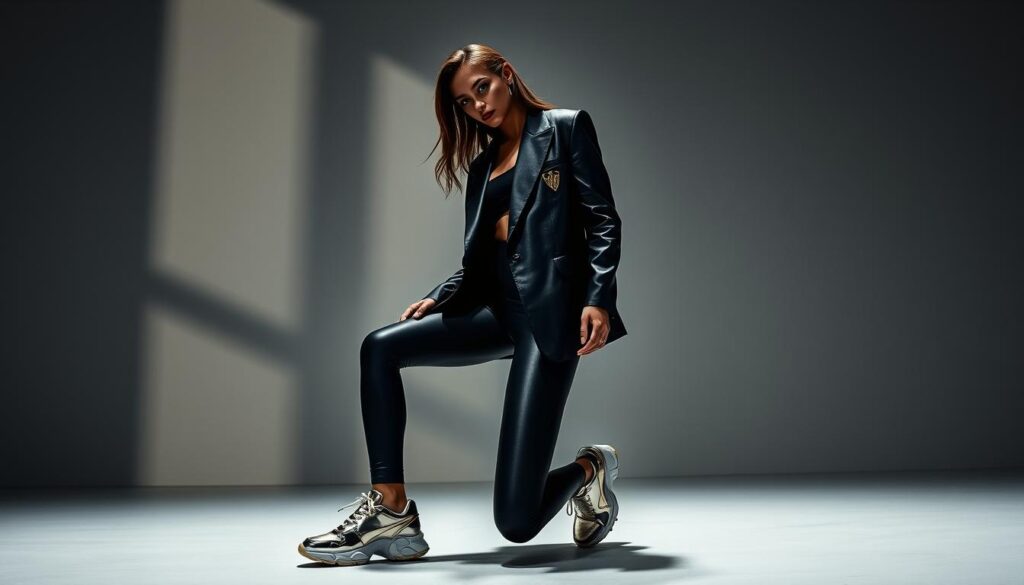
Athletic Influences on High Fashion
Athletic influences are increasingly shaping high fashion, with designers incorporating elements of sportswear into their collections. This trend is driven by the growing demand for comfort and versatility in styles. As a result, luxury brands are redefining their products to appeal to a wider audience.
The casting of Olympic athletes in runway shows for brands like Off-White, Tommy Hilfiger, and Brandon Maxwell signals a significant shift in who shapes fashion narratives. Athletes bring authentic performance credibility and massive social media followings to brand partnerships, making them powerful influencers in the industry.
Sports Stars as Fashion Icons
Sports stars are emerging as fashion icons, with athletes like Lewis Hamilton, Caitlin Clark, and tennis champions becoming central to luxury marketing strategies. Their influence extends beyond the sports world, shaping consumer perceptions of luxury and making brands more relatable. As athletes continue to make their mark on the fashion industry, we can expect to see more innovative collaborations and experiences that blend sports and luxury.
For more insights on this trend, you can read about the trend of luxury brands collaborating with established sports and how it’s becoming popular.
Sustainable Innovation in Luxury
The future of luxury is being shaped by sustainable innovation, with brands leveraging cutting-edge materials and practices. This shift is driven by modern consumers who are increasingly factoring ethical considerations into their purchasing decisions.
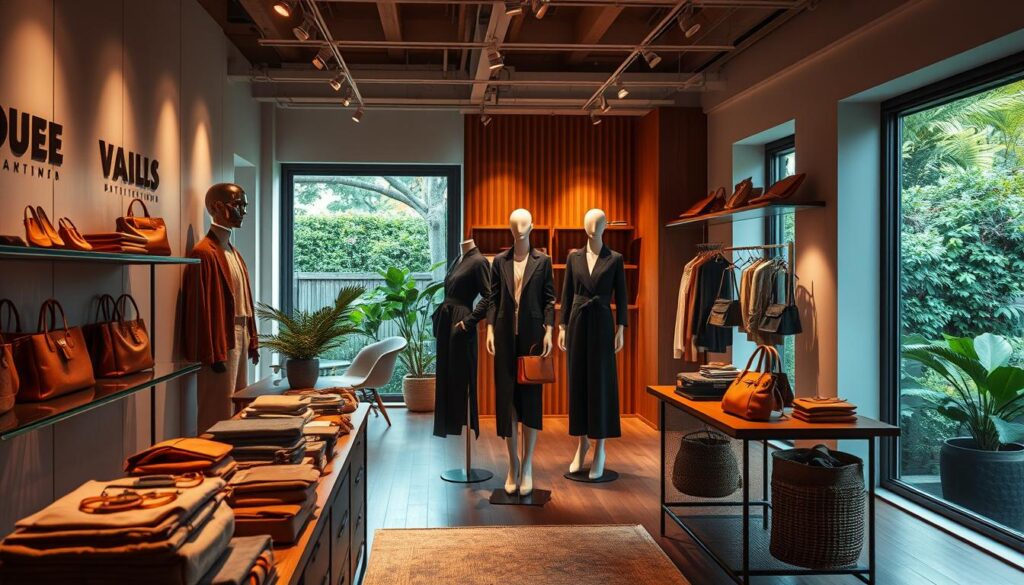
Next-Generation Materials
Luxury brands are at the forefront of developing and utilizing next-generation materials that are not only innovative but also sustainable. These materials are designed to reduce environmental impact without compromising on quality or aesthetic appeal.
- Recycled materials are being used to create high-end products.
- Organic fabrics are becoming more prevalent in luxury fashion.
- Lab-grown materials are emerging as a sustainable alternative to traditional luxury materials.
Ethical Luxury Practices
Ethical luxury practices are becoming a hallmark of modern luxury brands. These practices encompass a wide range of initiatives, from sustainable supply chain management to transparent customer communications.
- Leading luxury houses are implementing comprehensive ethical frameworks.
- Brands are providing detailed information about product origins and impact.
- The most successful ethical luxury initiatives balance principled commitments with practical business considerations.
By embracing sustainable innovation, luxury brands are not only enhancing their brand value but also contributing to a more sustainable future for the fashion industry.
Conclusion: Embracing Personal Style in Luxury Fashion
As luxury fashion continues to evolve, the emphasis on personal style and unique consumer experiences is becoming increasingly pronounced. We’ve explored the major trends shaping luxury fashion and accessories, highlighting how personal expression is becoming the ultimate luxury in today’s market.
The future of luxury lies in creating meaningful connections between brands and consumers, with personalization emerging as the key differentiator in customer experiences. Social media continues to democratize fashion influence while creating new opportunities for luxury brands to connect with consumers in authentic ways.
For more personalized insights into luxury fashion trends for your brand or personal style, contact CoWrit Technologies Inc via WhatsApp at +44-7822010953 for our comprehensive content and marketing services.
